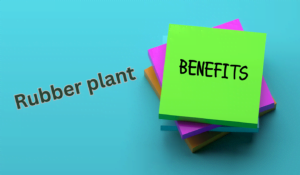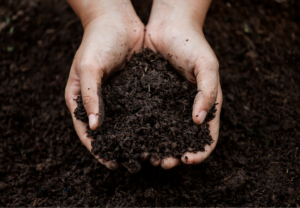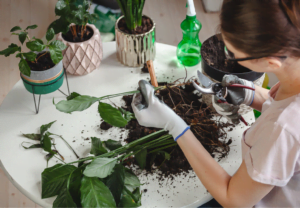Since 2017, I have been cultivating rubber plants and have already planted about 15 to 20 plants and taken good care of them, out of which I have sold about 10 to 15 plants so far. Today, in this blog, I will present all the detailed information about rubber plant trees, the benefits of this tree, and the steps that should be taken to care for this tree. I have been cultivating this tree for seven years.
A Beginner’s Guide to Propagating Rubber Plants
Because of their eye-catching look and ability to filter the air, rubber plants are a popular choice for indoor plants. In this guide, we will walk you through the process of propagating rubber plants to help you expand your plant collection with ease.
Understanding Rubber Plants
Rubber plants, scientifically known as Ficus elastica, are known for their shiny, leathery leaves and upright growth habit. This plant is relatively low maintenance, which I understand from my long experience. It can thrive under various adverse conditions.
Benefits of Propagating Rubber Plants

Rubber trees play an important role in propagating or creating new trees without spending money on buying trees. This tree helps you share your love for trees with your friends and family, as it has happened in my personal life.
Tools and Materials Required
Get the necessary supplies and tools before starting the propagation process:
– Sharp, clean pruning shears
– Rooting hormone (optional)
– Clean container for water propagation
– Well-drained potting mix for soil propagation
– For air layering, use plastic wrap and sphagnum moss.
Choosing the Right Method
Rubber plant propagation can be done in a number of ways. Water propagation is the technique I use most frequently:
– Water propagation
– Soil propagation
– Air layering
You can choose the method you like among these three methods. So far, I like water propagation a lot.
Water Propagation
Water propagation involves rooting plants in water until roots develop before transferring them to soil. This is an easy-to-use approach that makes root growth monitoring straightforward.
Soil propagation

Soil propagation is a traditional method of planting a cutting directly into a potting mix. This method may be more successful for some plant varieties and is less prone to root rot.
Air Layering
Air layering is a technique used to propagate mature rubber plants by encouraging root growth on the stem while still attached to the mother plant. This method requires patience but can result in a strong root system.
Steps for Successful Propagation
Preparation
A healthy rubber plant with mature stems should be selected for propagation. Choose a cutting that has at least two nodes, where the roots will develop very well. Prepare your tools and materials in a clean and organized workspace.
The Process of Propagation
Using sharp scissors, remove a clean clipping from the mother plant. Apply optional rooting hormone to the stem’s cut end. Observe the guidelines unique to the propagation method you have selected.
Maintenance and care

Keep cuttings in a warm, moist environment with indirect light. As needed, give the cuttings some water, making sure the soil is damp but not soggy. Check cuttings for indications of root development and modify care as necessary.
Common Problems and Solutions
Overwatering
It is not important how often you water a plant; the important thing is to monitor the growth of the plant according to the amount of water you are giving it. It is never good to overwater the plant, so before watering the plant, touch the soil at the base of the plant with your hand to see if the soil is lightly firm, and water the soil in such an amount that there is moisture in the soil. If the water level of the plant is low, the leaves of the plant will lose moisture and turn brown.
Root Rot
A typical issue with rubber tree propagation is roots. To stop the disease from spreading, remove the afflicted areas and repot in fresh soil.
Pests and Diseases
Watch out for pests like spider mites and scale insects. Treat infestations immediately with organic insecticides or insecticidal soaps.
Tips and Tricks for Growing Healthy Plants
Provide Adequate Lighting
Rubber plants thrive in bright, indirect light. To avoid leaf burn, place your propagated plant close to a window that receives plenty of sunshine.
Humidity Levels
Rubber trees prefer a moist environment. Mist the plant regularly or use a humidifier to maintain optimal humidity levels.
Fertilizer and pruning techniques

During the growing season, fertilize your rubber plant with a balanced liquid fertilizer. Prune the tree occasionally to maintain its shape and encourage new growth.
Summary and FAQ
Recap of Key Points
Rubber plant propagation is a fulfilling endeavor that lets you share your passion for gardening and grow your plant collection. Follow the steps outlined in this guide for successful propagation.
Answers to Frequently Asked Questions
How long does it take to root a cutting of a rubber tree?
Rooting a rubber tree cutting can take anywhere from a few weeks to a few months, depending on the method used.
Can I propagate a rubber plant from a leaf?
For the highest success rate, rubber plant propagation is best accomplished using stem cuttings as opposed to leaves.
How often should the rubber plants that I’ve propagated be fertilized?
Fertilize your rubber plant once a month during the growing season with a balanced liquid fertilizer diluted at half strength.
Additional Resources and References
Visit the following websites for additional details on growing rubber plants and general houseplant maintenance:
– The Spruce: Rubber Plant Care Guide
– Gardening Know-How: How to Propagate Rubber Plants
When propagating rubber plants, keep in mind that care and patience are essential. Take pleasure in seeing your new plant flourish as it grows!
I have been growing and selling this tree for five to seven years, therefore I am attempting to explain everything from my own experience. If you can understand my discussions correctly and follow the steps, I hope you can grow rubber plants with 100% success.


